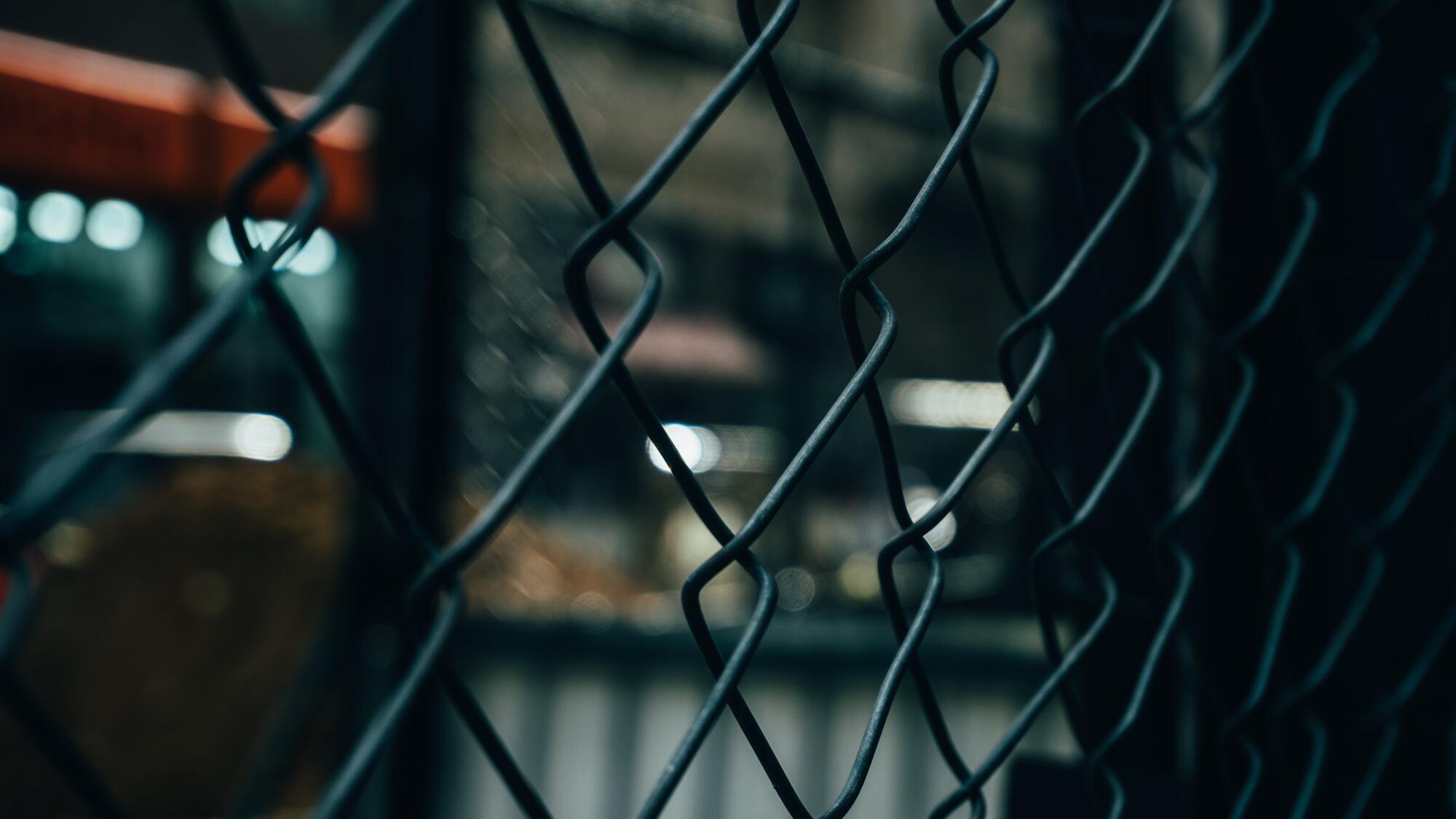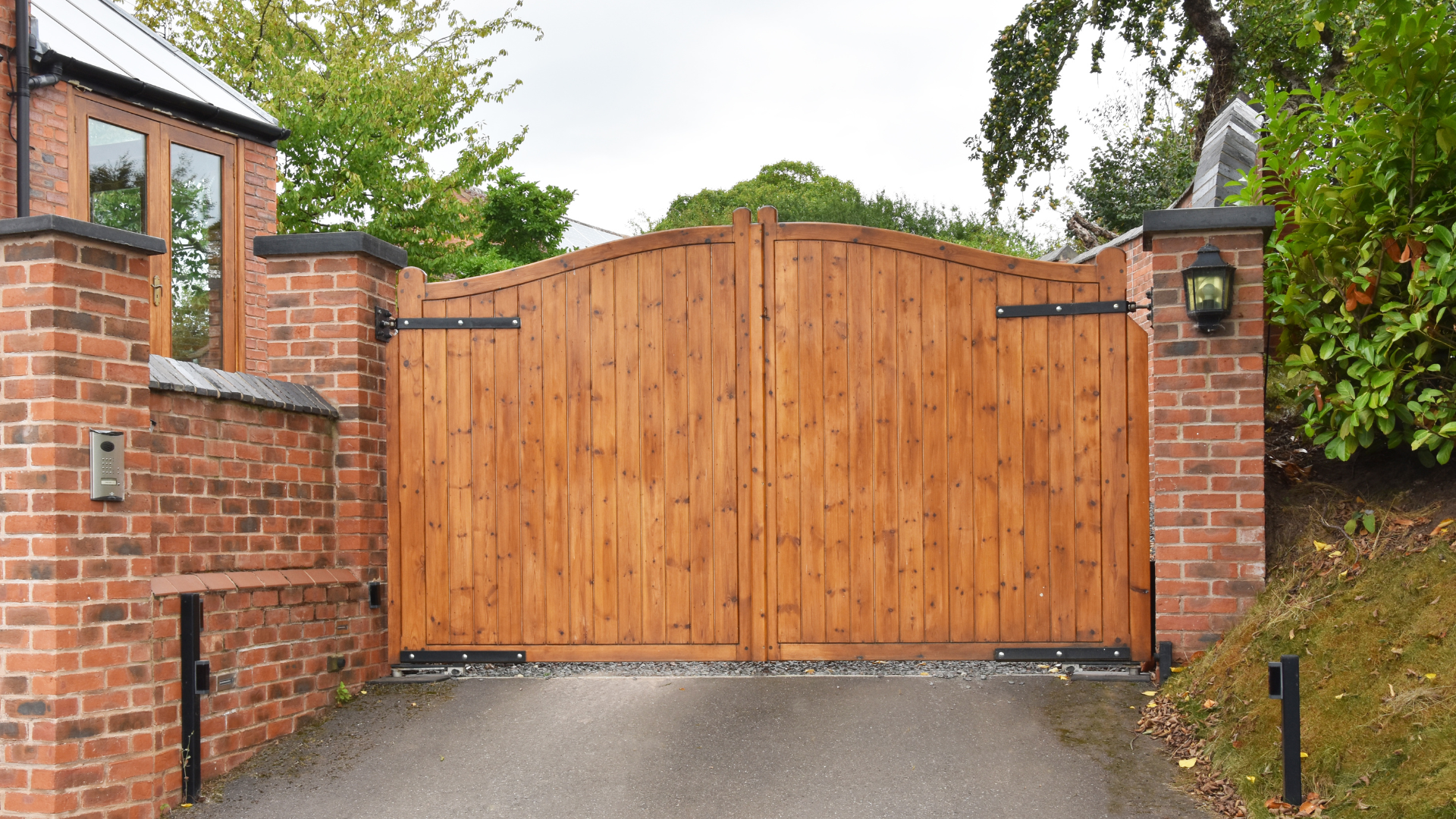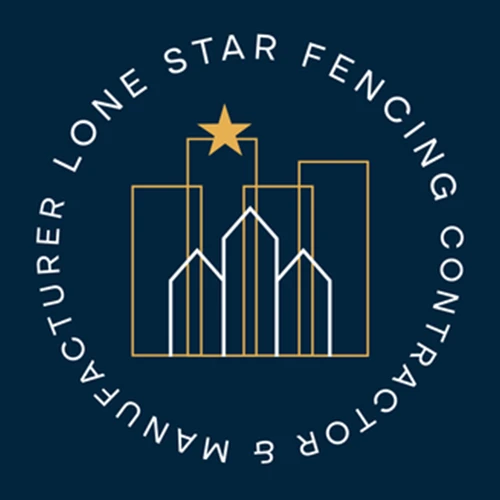Fences do more than just define property lines; they provide privacy and security for your home. Over time, fences can deteriorate, affecting not only aesthetics but also function.
Our guide offers a comprehensive look at replacing your fence, from selecting materials to understanding installation costs. Keep reading to learn how you can enhance your property’s boundary with confidence.
Key Takeaways
- A damaged or aging fence compromises safety and curb appeal; replacing it offers enhanced security, privacy, and property value.
- There are various fencing options including wood, vinyl, metal, and chain link; each with unique benefits regarding aesthetics, durability, maintenance requirements, and cost.
- The process of replacing a fence involves selecting the right company for installation or repair work and understanding related costs such as materials per linear foot ($4,000 to $12,000) and labor fees ($35 to $70 per hour).
- Proper planning includes considering local regulations about permits for new installations or major repairs on fencing structures.
- Investing in quality materials like vinyl can provide long – lasting results with minimal maintenance needs over time.
Why Replace Your Fence?
Replacing your fence is more than a mere upgrade—it’s an investment in securing and enhancing the value of your property. A fresh barrier serves not only as a bolster to your home’s curb appeal but also reinforces safety, privacy, and delineation of your personal space.
Reasons for fence replacement
Your fence is not just a property boundary; it is essential to the safety, privacy, and curb appeal of your home or commercial space. Understanding why it might be time for fence replacement can save you from larger issues down the line.
- Safety Comes First: A damaged or weak fence poses risks. It may collapse during severe weather or fail to keep out unwanted guests. Replacing a compromised fence ensures protection for your property.
- Upgrade Your Property’s Look: New fencing can significantly improve your property’s aesthetic appeal. Choose styles that complement your home and instantly boost its value.
- Preventive Measure Against Further Damage: Addressing minor damage immediately can prevent more costly repairs in the future. For wood fences showing significant rotting or decay, full replacement might be the best path forward.
- Enhance Privacy: If your current fence fails to provide adequate privacy, upgrading to a taller or more opaque style could offer the seclusion you need.
- Long-Term Investment: Investing in quality materials like vinyl can lead to longer-lasting results and fewer maintenance needs over time.
- Insurance and Liability Concerns: Fences in disrepair could affect homeowner liability and insurance claims after an incident. Ensure peace of mind with sturdy fencing around your perimeter.
- Comply With Regulations: Local ordinances often dictate specific requirements for fences. Replacement ensures compliance with these terms of use and avoids potential fines.
- Solve Functionality Issues: Gates that stick or do not close properly are frustrating and reduce security. New gate installations can resolve these problems efficiently.
Benefits of a new fence
Upgrading to a new fence can instantly increase your property’s value, creating a solid investment for both homeowners and commercial property managers. It gives your space an immediate face-lift, enhancing curb appeal and contributing to neighborhood aesthetics.
A sturdy, modern fence also sets definitive boundary lines that protect against trespassing and unwanted intrusions.
New fences offer added privacy, turning backyards into secluded retreats free from prying eyes. They eliminate the hassle of continuous maintenance too; instead of patching up an aging barrier prone to rot or insect damage, you can enjoy the durability and longevity of fresh materials.
As we consider these advantages, let’s move on to explore the variety of fencing options available in “Types of Fences and Fence Gates”.
Types of Fences and Fence Gates
Understanding the various materials and styles available for fences and gates is pivotal in ensuring you select the right barrier to enhance both security and curb appeal. Explore the diverse options that cater to different aesthetic preferences, maintenance levels, and budgetary requirements, shaping your property’s perimeter with precision and purpose.
Wood
Wooden fences offer a classic appeal that never goes out of style, embodying both form and function. They serve as sturdy barriers to protect your property and provide a natural aesthetic boost that can significantly increase curb appeal.
With various timber species available, each offers its unique benefits, from the rustic charm of cedar to the durability of redwood. Homeowners are spoiled for choice with nine distinct wood fence types at their disposal, catering to preferences in privacy, security, or simply enhancing the outdoor space.
Selecting the right type of wood is crucial for ensuring longevity and reducing maintenance needs. Hardwoods like oak withstand harsh weather conditions better than softer woods such as pine but may come at a higher cost.
Additionally, proper treatment can help fend off insects and decay, preserving your investment for years to come. The components — posts, pickets or in-fill boards, and rails — must be assembled with precision by experienced handymen who understand how these elements work together to create a robust yet attractive boundary around your home or commercial property.
Vinyl
Vinyl fences stand out as a stellar choice for homeowners and commercial property managers seeking durability and minimal maintenance. These sturdy barriers are dog-friendly, which is great news for pet owners who want to keep their furry friends safe without sacrificing style.
With vinyl fencing, you won’t have to stress over frequent repairs or repaint jobs since this material resists weathering far better than traditional wooden options.
Opting for a vinyl perimeter means investing in long-term value; these fences can last upwards of two decades if cared for properly. They embody the blend of functionality and aesthetics with their clean lines and variety of designs that never require staining or sealing.
The PVC construction ensures your investment withstands the test of time, sparing your budget from ongoing costs associated with upkeep, while continually renewing the look and security of your property’s boundary.
Metal
Metal fences offer durability and strength, making them an excellent choice for both residential and commercial properties. Aluminum options stand out as they require virtually no maintenance and won’t succumb to rusting, giving you peace of mind regardless of the weather conditions.
On top of that, metal fencing such as aluminum or steel provides a sleek look that can significantly boost your property’s curb appeal.
Selecting steel fences means investing in long-lasting security. With solid-steel, cast-iron, or tubular-aluminum options available, you’re looking at a fence that could last generations with minimal care needed over the years.
It’s worth noting how these metals can also be crafted into intricate designs for those seeking aesthetic finesse alongside functionality—blending elegance with fortitude. As we consider your perimeter requirements further, let’s not overlook the flexibility and cost-effectiveness offered by another popular material: chain link.
Chain link
Chain link fences, often selected for their durability and versatility, are a staple in both residential and commercial spaces. Known as hurricane or chain-wire fencing, they offer solid security without obstructing views.
Property owners appreciate the low maintenance and reliability that come with a well-installed chain link fence.
Dispelling myths about their aesthetics, modern chain link options can actually enhance the look of your perimeter when chosen wisely. Contractors have access to comprehensive guides that help navigate from selection through installation, ensuring every step meets expectations.
Expect sturdy solutions that stand up to weather and wear while providing practical functionality for years to come.
The Fence Replacement Process
Expertly navigating the fence replacement process is crucial for enhancing your property’s security and aesthetics; learn more about selecting premier services that align with your budgetary and design preferences.
Choosing the right company
Selecting a trustworthy fence company is crucial in ensuring your perimeter stands the test of time. Look for businesses with robust portfolios and positive customer feedback. It’s important to check whether they offer comprehensive services like installation and repairs.
A reputable provider will help you navigate options suited to your specific needs while being transparent about costs and timelines.
Lone Star Fencing takes pride in assisting homeowners and commercial property managers with these decisions. Our expertise lies not only in offering an extensive inventory of fencing materials but also providing personalized guidance every step of the way.
The right partner for your project should simplify the process, letting you rest easy knowing that your investment adds beauty and value to your property without unnecessary hassle or delay.
Cost considerations
Selecting the right company to replace your fence is a critical decision, but equally important is understanding the financial implications of such a project. Budgeting for a fence replacement involves looking at a myriad of factors that determine the overall cost. Below is a breakdown of the average expenses you might encounter during the fence replacement process.
| Expense Category | Details | Average Cost |
|---|---|---|
| New Fence Installation | Cost per linear foot for materials and labor | $4,000 to $12,000 |
| Fence Replacement | Removal and replacement cost per linear foot | $30 to $80 |
| Contractor Labor Fees | Hourly rate for professional installation | $35 to $70 per hour |
| Fence Repair | For minor issues such as sagging or cracks | $302 to $922 |
| Average Total Replacement Cost | Complete fence teardown and new installation | $1330 to $5550 |
Homeowners and commercial property managers must consider these cost variables when planning for a fence replacement. It’s about balancing quality with financial responsibility to ensure the new perimeter meets both security and aesthetic requirements. Remember to factor in the type of materials and the fence’s length as they significantly impact the final investment.
Installation and repair services
Installing a new fence or repairing an existing one is a significant task for any property owner. It requires careful consideration and the expertise of skilled professionals to ensure longevity and quality. Here’s what to expect from installation and repair services:
- Determine your needs by evaluating the condition of your current fence. This will help you decide whether a simple repair or a full replacement is necessary.
- Hire reputable contractors who specialize in fence installations and repairs. Look for companies with positive reviews and proven track records of timely, quality work.
- Obtain multiple quotes to compare costs, but also assess the value of the services offered by each company. The cheapest option is not always the best one when it comes to long-term durability.
- Discuss materials with your contractor, selecting wood, vinyl, metal, or chain link based on your specific requirements like privacy, security, or aesthetic appeal.
- Schedule an on – site inspection for an accurate estimate from the contractor; this will involve measuring your property lines and discussing design options.
- Ask about repair techniques if fixing your old fence is more practical. Professional methods include using metal post menders for stability and concrete reinforcement for strength.
- Review warranty options provided by fencing companies. A good warranty can save you money on future repairs if any issues arise with materials or workmanship.
- Prepare for maintenance advice after installation to help extend the lifespan of your new fence; this could include staining wood fences or scheduled inspections.
- Check local regulations before starting any work; some areas require permits for both new installations and major repairs on fencing structures.
Contact Lone Star Fencing for Your Fence Replacement
Choosing the perfect fence boosts both security and curb appeal for your property. With various materials like wood, vinyl, and metal available, you’ll find an option that suits your needs and budget.
Remember, a sturdy new fence can save you cash by avoiding frequent repairs in the future. Think about calling in a professional handyman or company to ensure quality workmanship. Let your newly replaced fence be a statement of pride and practicality for your home or business. Contact Lone Star Fencing today to begin your fence replacement project!
FAQs
1. What should I consider before replacing my fence?
Before you replace your fence, think about the cost and the type of materials you want to use. If you need help paying, explore options like credit or loans from lenders.
2. Can I install a new fence by myself?
Installing a fence can be tough work! If you’re not sure how to do it, hiring a handyman might be your best choice.
3. How long does a typical fence replacement take?
The time it takes to replace a fence varies based on size and material, but most jobs can be completed within a few days.
4. Will my new fence require special care or maintenance?
Your new fence might need regular upkeep, depending on its material. Always check for any specific care instructions that come with your fencing material to keep it looking great.
Genesis Diaz drives Lone Star Fencing with a sharp focus on innovation and quality in the fencing industry. Her expertise in designing and installing premium fencing solutions has earned Lone Star Fencing a distinguished reputation among its clientele. Genesis’s leadership is characterized by her commitment to excellence, attention to detail, and a client-centered approach, ensuring every fencing project exceeds expectations. With a team of skilled professionals, Lone Star Fencing is committed to delivering superior fencing services, sharing valuable insights on choosing the right fencing materials and designs to enhance security, privacy, and aesthetic appeal.




